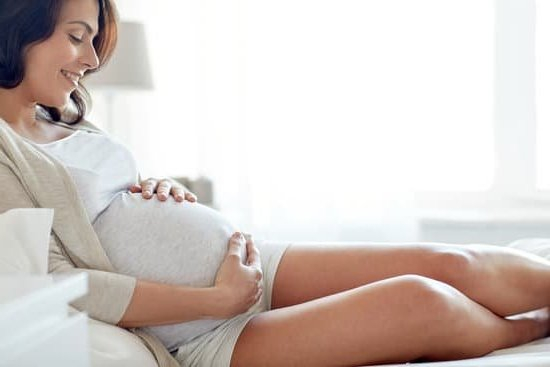Lower back pain is a common symptom experienced by many women during early pregnancy. It can be concerning for expectant mothers, but it is important to understand that this discomfort is often normal and typically not a cause for alarm. In this article, we will delve into the reasons behind lower back pain in early pregnancy, including hormonal changes and physical modifications that the body undergoes during this crucial time.
During early pregnancy, hormonal changes play a significant role in causing lower back pain. The increase in hormones such as progesterone can lead to relaxation of the ligaments and muscles in the pelvic area, which can result in strain on the lower back. Additionally, these hormonal shifts can also affect the way messages are transmitted between nerves, potentially causing discomfort in the lumbar region.
Aside from hormonal influences, physical changes in the body also contribute to lower back pain during early pregnancy. As the uterus expands to accommodate the growing fetus, it places added pressure on surrounding organs and structures. This shift in weight distribution can impact posture and lead to strain on the lower back muscles. Understanding these underlying factors can help expectant mothers find ways to manage and alleviate their discomfort effectively.
Causes of Lower Back Pain During Early Pregnancy
Lower back pain is a common symptom experienced by many women during early pregnancy. While discomfort in this area can be worrying, it is important to understand that lower back pain is normal in early pregnancy. This article will explore the various causes of lower back pain during this stage of pregnancy and provide tips on managing and alleviating the discomfort.
Some of the main causes of lower back pain in early pregnancy include hormonal changes and physical changes in the body. Hormonal shifts, such as an increase in progesterone levels, can lead to relaxation of the ligaments and joints in the pelvic area, which can result in strain on the lower back muscles. Additionally, as the uterus expands to accommodate the growing fetus, it can cause a shift in the center of gravity, putting extra pressure on the lower back.
To help alleviate lower back pain during early pregnancy, consider implementing these tips:
- Practice good posture: Maintaining proper posture while sitting and standing can help relieve strain on the lower back.
- Use a supportive mattress: Sleeping on a firm mattress or adding a pillow between your knees while sleeping on your side can provide added support.
- Stay active: Gentle exercises such as prenatal yoga or swimming can help strengthen muscles and improve flexibility, which may reduce lower back pain.
It is important to listen to your body and seek medical help if you experience severe or persistent lower back pain during early pregnancy. Your healthcare provider can offer guidance on safe ways to manage discomfort and ensure that there are no underlying issues contributing to your symptoms. Remember that experiencing lower back pain is normal in early pregnancy, but it is always best to consult with a healthcare professional for personalized advice.
Hormonal Changes and Lower Back Pain
During early pregnancy, hormonal changes play a significant role in causing lower back pain. The hormone relaxin is produced in higher levels during pregnancy to loosen ligaments in preparation for childbirth. This hormone can also affect the ligaments and muscles supporting the lower back, leading to discomfort and pain. Additionally, progesterone levels increase during pregnancy, which can soften the discs between the vertebrae, causing instability and contributing to lower back pain.
Impact on Posture
The hormonal changes occurring in early pregnancy can also impact posture, leading to an increased arch in the lower back. This change in posture can put additional strain on the lower back muscles, resulting in discomfort. As the uterus grows and shifts position throughout pregnancy, it can further exacerbate lower back pain by adding pressure to the lumbar spine.
Relief Strategies
To help manage lower back pain caused by hormonal changes during early pregnancy, it is important to practice good posture and engage in gentle exercises that strengthen the core muscles. Utilizing heat or cold therapy on the affected area can also provide relief.
Additionally, using ergonomic support devices such as a maternity pillow while sitting or sleeping can help alleviate pressure on the lower back. If the pain persists or becomes severe, it is crucial to consult with a healthcare provider for further evaluation and possible treatment options.
Overall, experiencing lower back pain is normal in early pregnancy due to hormonal changes affecting ligaments, posture, and muscle stability. By being mindful of these factors and implementing proper strategies for relief and support, individuals can effectively manage and alleviate lower back pain during this important stage of their lives.
Physical Changes and Lower Back Pain
During early pregnancy, physical changes in a woman’s body can contribute to lower back pain. The growing uterus puts pressure on the pelvis and lower back, causing discomfort and pain. As the fetus develops, the center of gravity of the body shifts forward, leading to an increase in the curvature of the spine. This change can strain the muscles of the lower back, resulting in pain and discomfort.
Relaxin Hormone
One major physical change that contributes to lower back pain during early pregnancy is the release of relaxin hormone. This hormone is produced by the ovaries and placenta and plays a crucial role in loosening ligaments and joints in preparation for childbirth. While this is necessary for facilitating labor and delivery, it can also cause instability in the pelvic area, leading to increased stress on the lower back muscles.
Posture Changes
Another physical change that can lead to lower back pain is alterations in posture. As the baby grows, women may unknowingly adjust their posture to accommodate the additional weight and changes in their body.
Poor posture, such as slouching or standing with excessive arching of the lower back, can exacerbate existing back pain or even create new discomfort. It is important for pregnant women to be mindful of their posture and practice good ergonomics to alleviate strain on their lower back muscles.
Tips for Managing Lower Back Pain in Early Pregnancy
During early pregnancy, it is common for women to experience lower back pain. This discomfort can be attributed to a variety of factors, including hormonal changes and physical adjustments in the body as the fetus grows. While it may be unsettling for some expectant mothers, there are several tips that can help manage and alleviate lower back pain during this time:
- Practice good posture: Maintaining proper posture can help reduce strain on the lower back. Make sure to sit and stand up straight, avoiding slouching or hunching over.
- Use supportive footwear: Wearing comfortable shoes with proper arch support can help alleviate pressure on the lower back. Avoid high heels or shoes that lack adequate support.
- Stay active: Light exercises and gentle stretches can help strengthen the muscles in your back and abdomen, which may help alleviate lower back pain. Consider activities like prenatal yoga or swimming.
In addition to these tips, there are other strategies that can assist in managing lower back pain during early pregnancy:
- Apply heat or cold packs: Using a heating pad or ice pack on the affected area can provide relief from discomfort. Be sure to follow instructions and avoid excessive heat or cold exposure.
- Practice relaxation techniques: Stress and tension can exacerbate lower back pain. Relaxation techniques such as deep breathing, meditation, or prenatal massage may help decrease muscle tension and promote overall well-being.
- Consider support products: Maternity belts or special pillows designed for pregnant women can offer additional support to the lower back and pelvis, reducing strain on these areas.
By incorporating these tips into your daily routine, you may find relief from lower back pain during early pregnancy while promoting a healthier and more comfortable experience as you prepare for motherhood. Remember to consult with your healthcare provider before starting any new exercise regimen or utilizing new methods for managing pain.
When to Seek Medical Help for Lower Back Pain
When experiencing lower back pain during early pregnancy, it is important to know when to seek medical help. While some level of lower back discomfort is considered normal during this time, there are certain signs and symptoms that may indicate a more serious issue. If the pain is severe, persistent, or accompanied by other symptoms such as fever, vaginal bleeding, or cramping, it is crucial to consult with a healthcare provider.
Additionally, if the lower back pain is interfering with daily activities, causing weakness or numbness in the legs, or worsening over time, it may be necessary to seek medical attention. These could be signs of a more serious underlying condition such as an infection, kidney stones, or a potential complication with the pregnancy. It is always better to err on the side of caution and have a healthcare professional evaluate your symptoms.
In some cases, lower back pain in early pregnancy can also be a sign of conditions like sciatica or pelvic girdle pain. These conditions may require specific treatment or management strategies tailored to each individual case. Therefore, if you are unsure about the cause of your lower back pain or how to effectively manage it, consulting with a healthcare provider is recommended.
| Signs & Symptoms | What to Do |
|---|---|
| Severe and persistent lower back pain | Consult with a healthcare provider |
| Pain accompanied by fever, vaginal bleeding, or cramping | Seek medical help immediately |
| Weakening or numbness in legs | Medical evaluation needed |
Exercises and Stretches to Alleviate Lower Back Pain
During early pregnancy, lower back pain is a common discomfort experienced by many women. However, there are exercises and stretches that can help alleviate this discomfort and improve overall comfort. It is essential to consult with your healthcare provider before starting any exercise routine during pregnancy to ensure safety.
One gentle exercise that can help relieve lower back pain is prenatal yoga. Yoga poses specifically designed for pregnant women can help improve flexibility, strengthen muscles that support the lower back, and provide relaxation techniques to reduce stress and tension. Additionally, pelvic tilts and gentle stretches targeting the lower back and hip area can also provide relief from discomfort.
Furthermore, incorporating daily walks into your routine can also help alleviate lower back pain during early pregnancy. Walking helps improve circulation, maintain a healthy weight, and strengthen the muscles in the back and abdomen. It is important to wear supportive footwear and stay hydrated while walking to prevent any strain on the body. Remember to listen to your body’s cues and not overexert yourself.
Prevention Tips for Lower Back Pain in Early Pregnancy
Lower back pain is a common symptom experienced by many women during early pregnancy. While it can be concerning, it is generally considered normal as the body goes through significant changes to support the developing fetus. The lower back pain in early pregnancy is often a result of hormonal shifts, physical changes, and the increased weight and pressure on the spine due to the growing uterus.
One of the main causes of lower back pain in early pregnancy is attributed to hormonal changes, particularly an increase in relaxin and progesterone levels. Relaxin helps loosen ligaments and joints in preparation for childbirth, but this can also lead to instability in the pelvic region and lower back discomfort. Progesterone, on the other hand, can cause relaxation of smooth muscles including those in the digestive system, leading to issues like constipation which can worsen back pain.
In addition to hormonal factors, physical changes such as shifts in posture and center of gravity can also contribute to lower back pain during early pregnancy. As the uterus expands and the baby grows, there is a natural tendency to lean backward which puts strain on the lower back muscles.
This change in posture combined with weakened abdominal muscles due to stretching can exacerbate discomfort. It is important for pregnant women to be mindful of their posture and make adjustments accordingly to relieve some of this pressure on their lower back.
| Common Causes | Impact |
|---|---|
| Hormonal Changes | Ligament loosening and pelvic instability |
| Physical Changes | Shifts in posture and muscle weakening |
Conclusion
In conclusion, it is important for women to understand that experiencing lower back pain in early pregnancy is actually quite common and can often be considered a normal part of the body’s adjustment to the changes happening during this time. The combination of hormonal fluctuations, physical changes such as weight distribution, and the shifting of internal organs can contribute to discomfort in the lower back area.
By recognizing these factors as potential causes of lower back pain in early pregnancy, women can feel reassured that they are not alone in experiencing this symptom.
While lower back pain can be bothersome, there are various ways to help manage and alleviate the discomfort. Simple tips such as practicing good posture, using supportive footwear, engaging in gentle exercises or stretches specifically targeting the lower back, and applying heat or cold packs can all provide relief. Additionally, maintaining a healthy lifestyle with proper nutrition and staying hydrated can also contribute to reducing the intensity of lower back pain during early pregnancy.
Ultimately, if the lower back pain becomes severe or is accompanied by other concerning symptoms such as vaginal bleeding or sharp abdominal pains, it is crucial to seek medical attention promptly. A healthcare provider will be able to evaluate the situation and provide appropriate guidance on how to manage the discomfort effectively.
By being proactive about addressing any concerns related to lower back pain in early pregnancy, women can better focus on their overall well-being and enjoy this special time of anticipation and preparation for welcoming their new arrival.
Frequently Asked Questions
When Should I Be Concerned About Lower Back Pain in Early Pregnancy?
Lower back pain in early pregnancy can be common due to hormonal changes, weight gain, and shifts in the center of gravity. However, if the pain is severe, persistent, or accompanied by other symptoms like bleeding, it’s important to consult a healthcare provider to rule out any serious issues.
Is Cramping and Back Pain Normal at 4 Weeks Pregnant?
Cramping and back pain at 4 weeks pregnant is often considered normal as it may be due to implantation of the embryo into the uterus. It’s usually mild and temporary. But if the pain becomes severe, is accompanied by heavy bleeding, or lasts for a long time, it’s best to seek medical advice.
Does Your Back Hurt After Implantation?
Back pain after implantation can occur as the body adjusts to hormonal changes and physical changes in the pelvis during early pregnancy. It might feel like mild discomfort or twinges in the lower back. However, if the pain is severe or worsening over time, it’s advisable to speak with a healthcare provider to ensure there are no complications.

Welcome to my fertility blog. This is a space where I will be sharing my experiences as I navigate through the world of fertility treatments, as well as provide information and resources about fertility and pregnancy.





